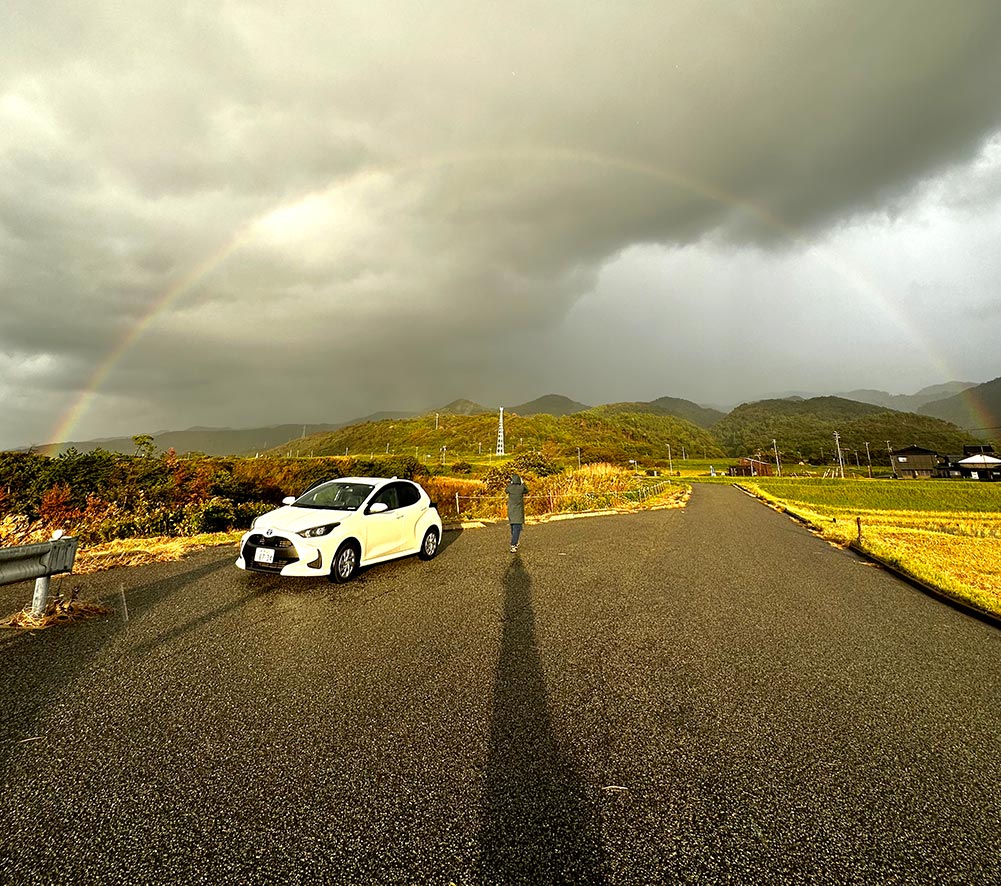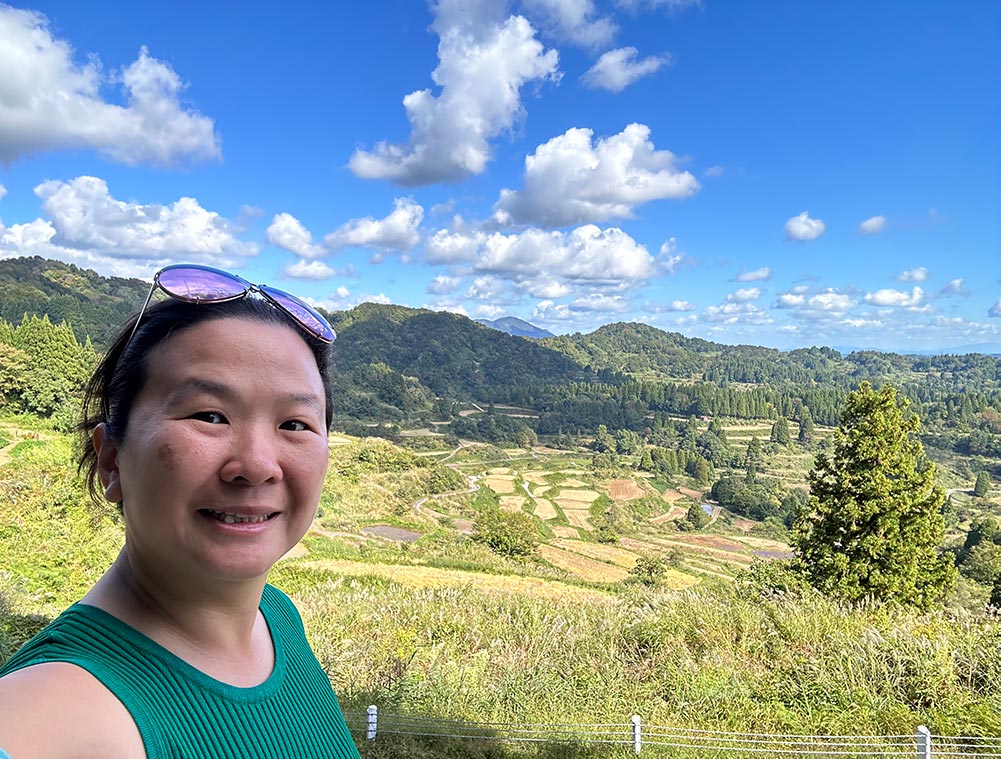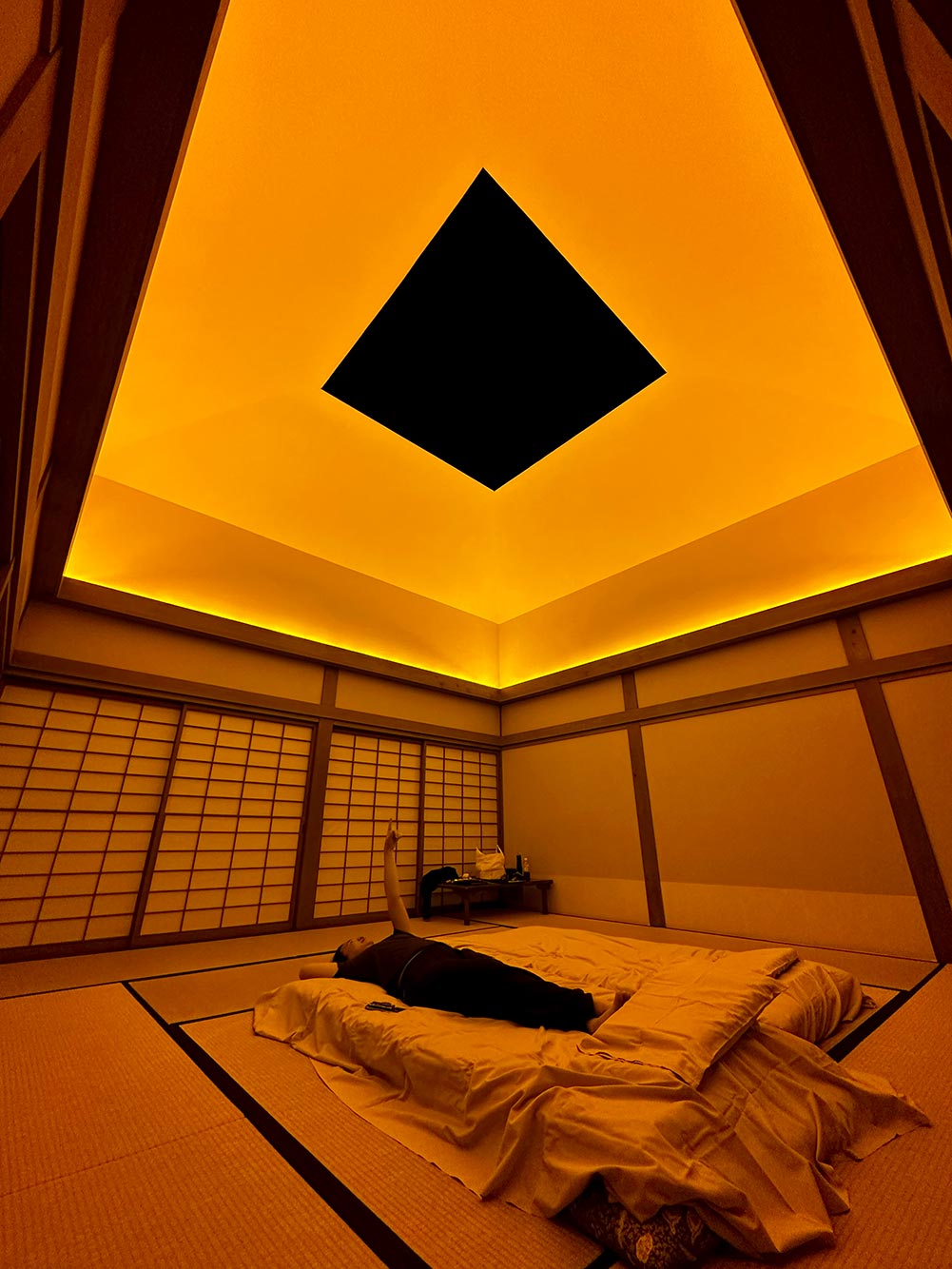Japan is made up of four large islands, but in recent years I’ve made visits to some of its smaller islands, like those in the Setouchi Inland Sea area as well as the offshore Okinawa islands. On this road trip to Niigata, I took a detour off the Chugoku island to visit Sado Island 佐渡島, one of Japan’s largest islands and home to some pretty interesting traditions and unique sights. Here’s my little guide on things to do on a Sado Island road trip.
Why should you visit Sado Island?
My blog readers know that I love a good offshore island, and while it’s not something typically associated with Japan, this country has so many islands to explore! I have visited the art islands in Setouchi and cycled across the islands that make up the Shimanami Kaido, so I was curious to see what else was out there.
I wanted to check out Sado Island since I was head to the Echigo Tsumari Art Triennale and was on the hunt for other hidden gems in Niigata. Friends recommended that I check out Sado Island as it is a pretty popular Niigata day trip, and I was captured by the visuals of tub boats and toki birds and decided to spend a night or two there.
I am aware that Sado is really ‘Sa Island’, but I’m going to use Sado Island here just to make it clear that we are talking about this particularly location and not any other Sado.
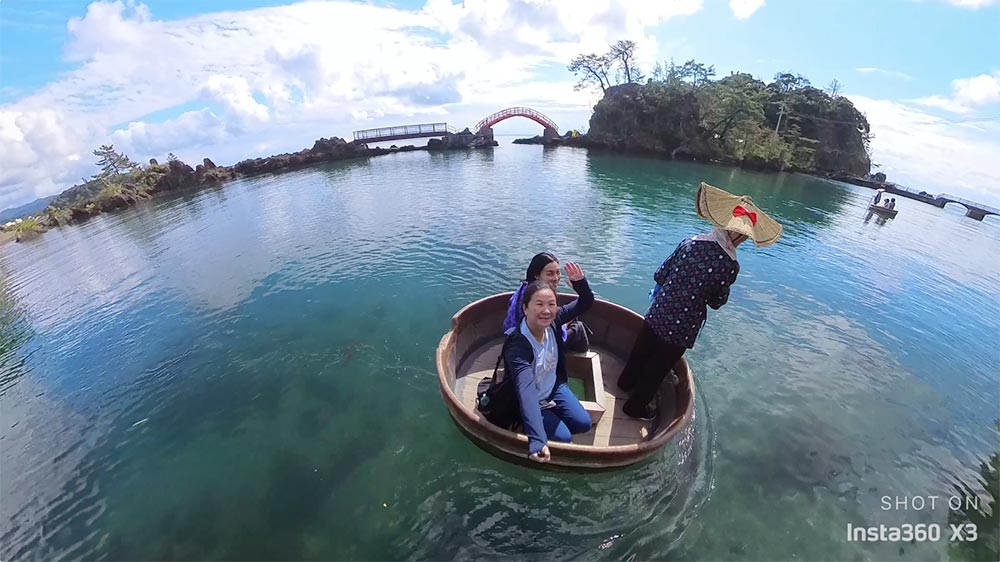
How to get to Sado Island
Sado Island is located off the northwestern end of Chugoku Island, close to Niigata City. The island has 2 ferry ports – most people choose to go from Niigata City to Ryotsu Port on the east coast of Sado as that has the most and fastest connections as you can ride the jetfoil instead of the car ferry.
Another option is heading to Naoetsu city in Joetsu which has a car ferry that goes to Ogi port in the south Sado, but only had 2 trips in a day.
- Niigata City – Ryotsu (east Sado): Car Ferry (2.5 hours) or Jetfoil (1hr+)
- Naoetsu – Ogi (south Sado): Car Ferry (2 hr 40 mins)
More info on ferry timings and ports can be found on the Sado Kisen website.



I took the jetfoil between Niigata City and Ryotsu and the round trip ticket cost 13,370 JPY.
I did consider renting a car and riding the car ferry over from Naoetsu as it was closer, but note that the car ferry ticket is for 1 car (depends on length, round trip is from 26,000+ JPY) which includes 1 driver – additional passengers have to buy the passenger ticket. Ultimately, I decided it was cheaper/easier to just rent a car on Sado itself and buy round trip ticks for the faster Jetfoil.
Driving around Sado Island
Sado Island is pretty large, quite rural and while they do have a bus service, a rental car is by far the best way to navigate this island. There are main roads that circle the island’s coast, as well as one that cuts through the centre of the island going from Ryotsu port on the east to Sawada coast on the west.
Check out my article about Niigata road trip article for more about renting a car and driving in Japan.

I rented a car from Toyota Rent a Car, and the pick up was located right at the Sado Ferry Terminal at Ryotsu Port (Sadokisen Rent A Car). My car rental cost 21,670 JPY from Friday afternoon to Sunday afternoon – split between 2 pax over 2 days worth of travel it’s about S$45 per day which is pretty decent.

Driving around Sado Island is pretty easy as there is not a lot of traffic and there are decent roads. It can get very dark at night though and there aren’t a lot of street lights which can be a bit scary if you are up in the hilly areas.

How long to spend in Sado Island
We spent 2 nights in Sado Island and it was barely enough to see some of its main sights in the central area. Sado Island is a bit like Jeju Island for me – you think because it’s an ‘island’ that it’s not too big, but at 855+ sq km, it’s actually LARGER than Singapore (which is about 734 sq km) – Sado is the largest island in the Japan Sea!
Also to remember that while most of the sights are along the coast line, there will be areas where you are driving in the hill/mountains, so that also takes some travelling time.
I should have spent more time on Sado Island, but I was on a bit of a schedule and headed to Matsumoto and Tokamachi as well, but in future I think I would like to spend at least 3 nights on Sado minimally, and maybe do it road trip style and stay in a different guesthouse every night so cover more ground efficiently.

Where to stay in Sado Island
Sado is a fairly spread out island with most of its town centre in the centre portion of the island which is where I stayed on this trip.
Since we were driving, I wanted to pick a more unusual place to stay and found this cute little guesthouse called Rosencat on booking.com – as you might have guessed from the name, they are famous for their roses and their cats!

We had a tatami room on the 2nd floor with bedding and a table. There was another room located here but we had the floor to ourselves on those days. The bathroom is shared because this is one of those older properties that doesn’t have ensuite – it’s on the ground floor where there are some other rooms as well.

It wasn’t quite rose season in October when we were there but you can see they have a fabulous garden, and of course they had 5 cats that would wander around from time to time but the house was kept very clean, and the cats all were very well behaved too.


Rosencat’s location is pretty central in Sado Island and a short 20 min drive to Ryotsu Port, but it’s in a little village surrounded by rice paddies and there are no amenities in the immediate vicinity – we had a car so it was a short drive to nearby restaurants or onsen, but it’s not the most convenient location if you don’t drive.

Rosencat ローゼンキャット 体験型農家民宿 [Google maps] Check out Rosencat on booking.com [affiliate link]
Other alternative places to stay in Sado that I considered [affiliate links]:
- Guest Villa on the Bichi was a very strong contender because it looks both modern and cosy. I actually booked this for myself at first when I planned a solo trip, but when my friend confirmed she was coming on this trip, it was cheaper to book Rosencat instead. I did pass by this area very often when driving to and from the sights, lovely spot by the coast.
- NIPPONIA Sado 佐渡相川 金山町 also looks like a lovely place that’s a mix of old and new located in Aikawa near the gold mining area.
Things to do in Sado Island
I mostly visited places in the west/central bits and southwestern ends of Sado Island in my two days there, but here’s a rundown of the things to do in Sado that I think are worth checking out.
Ride the Tarai Bune, a traditional tub boat
One key thing to do in Sado is to ride the Tarai Bune, a really cute wash-tub looking like boat that’s made out of wood. Traditionally these boats were used for fishing and the compact round shape was meant to help the fishermen navigate the many narrow inlets of the coastline more easily to fish and pick up shellfish. These days, the Tarai Bune are mostly for tourists to ride on, and there are several locations along the coast to do so.

I headed down to Yajima-Kojima 矢島・経島, 2 islands located very close to Ogi port in the south of Sado and a particularly picturesque spot for a Tarai Bune ride because of the beautiful red arch bridge linking the islands. Here, the boats are manned by the island’s ladies dressed in traditional garb and with large floppy hats for protection from the sun.

These ladies don’t really speak English but know enough to communicate, like pointing out fish in the sea and letting us steer by showing how to paddle with just one oar. Let me just say that it’s a lot harder than it looks!
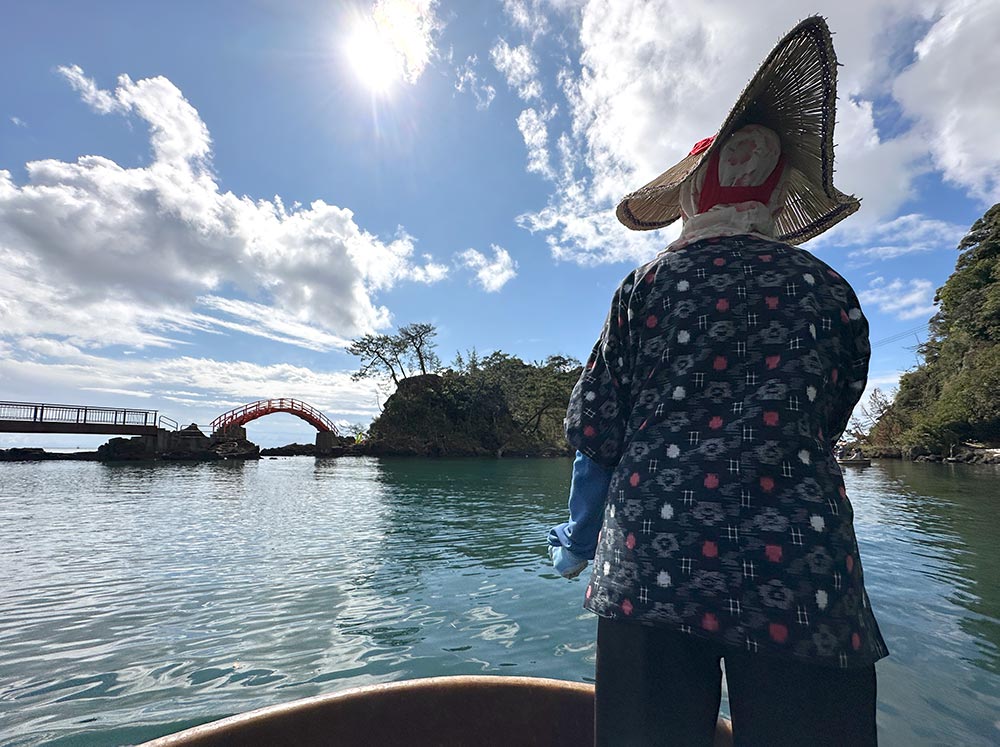
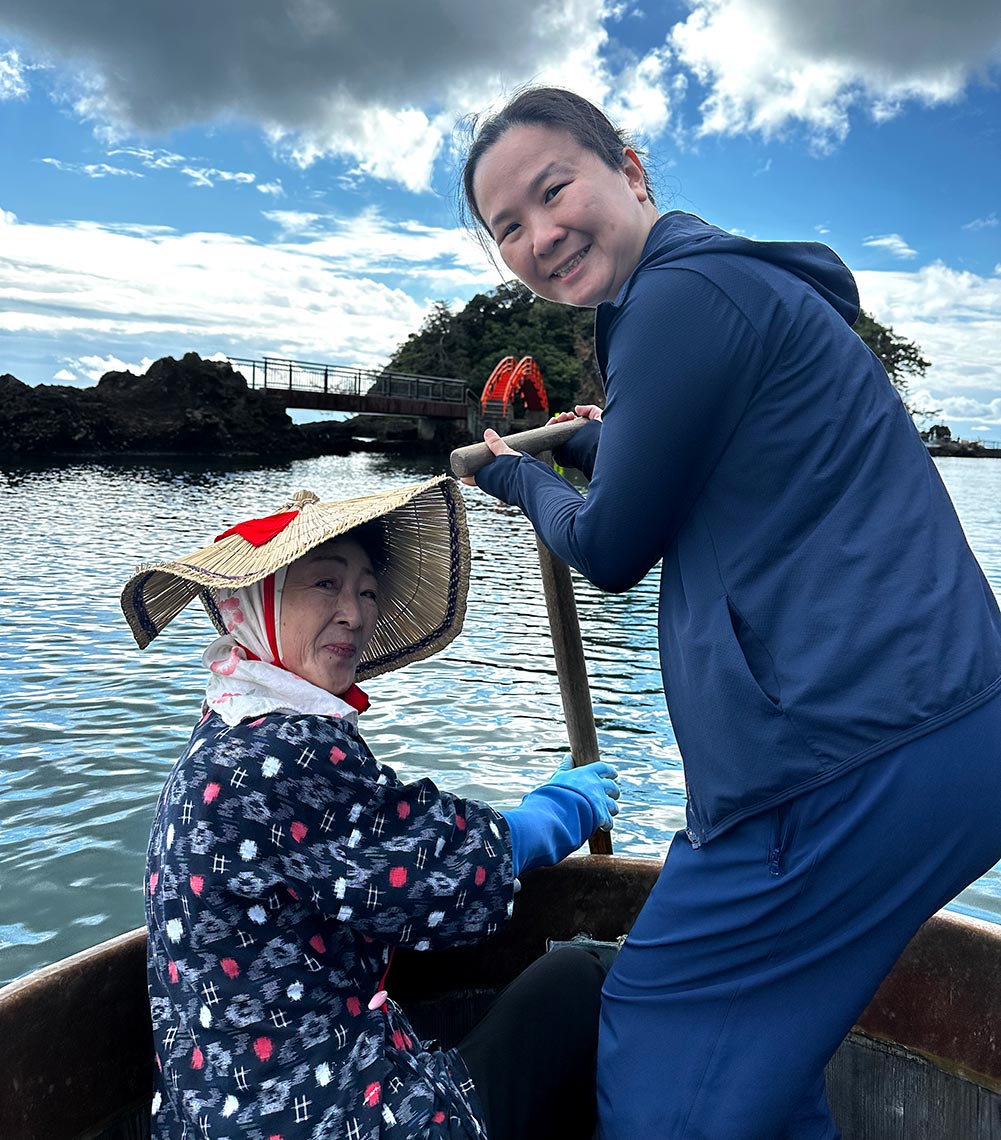
That boat ride doesn’t take too long, about 10-15 minutes as you navigate the picturesque little inlet. There is a glass panel in the middle of the boat if you want to look down into the water. After the boat ride, we took a little stroll around the islands, but sadly we couldn’t make a full circuit as there was some repair work going on.


Yajima-Kojima 矢島・経島 [Google maps] Open daily 8am – 5pm. The Tarai Bune ride cost 600 JPY and we bought the ticket directly from the Yajima Learning Centre.
Visit Shukunegi, the shipbuilder’s village
As an island, Sado was home to many seafaring people, and the village of Shukunegi 宿根木 on the southern tip of the island was particularly known for its shipbuilding and was an important port for merchant ships or sengokubune which in essence were large wooden cargo ships.

The houses in this village are very densely packed with narrow alleyways, and you’ll notice many wooden houses – these wooden houses were built with the same planks used to make sengokubune ships, and some of these date back to the late 18th century!


There are some heritage residences you can enter if you want to have a look around but you need to check on their opening timings. A particularl building of note that you can see but not enter is the Triangle House or Sankakuya, built to fit the awkward land plot, its triangular shape also makes it look more like a boat than the other houses.

We honestly didn’t do too much here, mostly wander around the streets and stop for lunch. You can also ride the Tarai Bune here in Shukunegi – we had already done it in Yajima Kyojima so we passed on that here.


We ate lunch at Yamashita 茶房 やました [Google maps] and had some delectable curry rice in a small restaurant that we chanced upon. It’s very cosy and has some nostalgic vibes, and they serve up pizzas and curry rice along with some desserts.


Shukunegi 宿根木 [Google maps]. There is a designated parking area near the post office a short 5-10 min walk away. More at the Shukunegi website
Pan for gold at Nishimikawa Gold Park
One of the more unusual things that Sado Island is known for is its long history of gold and silver mining, from as far back as 400 years ago during the Edo era in the 1600s, through the Meiji period and finally stopping in 1989 at the start of the Heisei period.
The mines are not working any more, but if you want to try your hand at finding any remnant gold left on the island, you can head to Nishimikawa Gold Park where instead of mining, you can do another old school sourcing technique which is to pan for gold.


This facility is located on the site of the Nishimikawa Gold Mine which has over a thousand years of history. There are many sand-filled troughs here where you can stick a bowl in and slowly sift away the sand to see how many gold flakes you can come away with. I didn’t try this myself, but panning looks like pretty hard work.

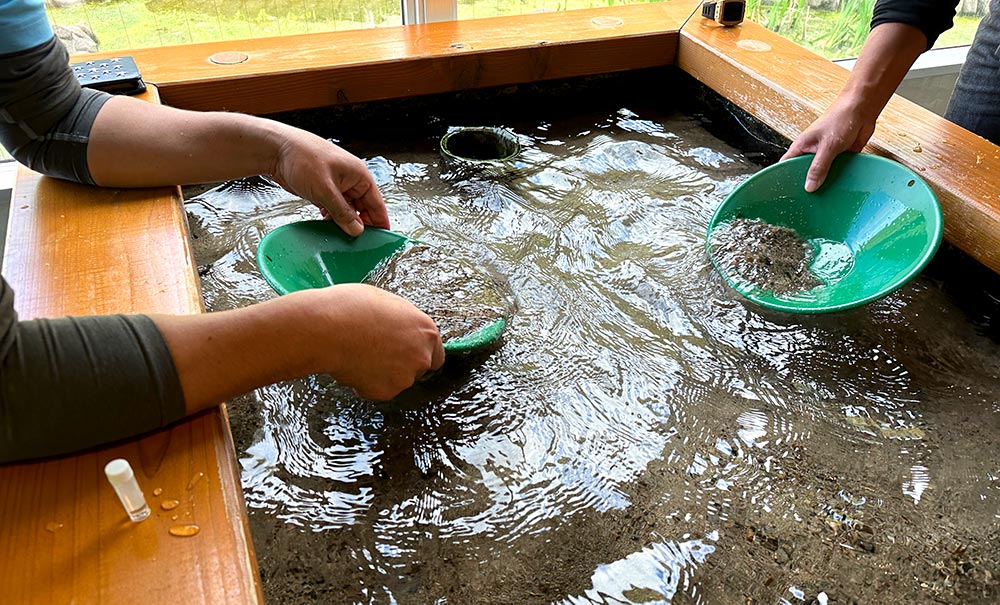

You can take the gold you collected and save it in a pendant that you can buy on site. You’re not going to be going away with large gold nuggets – this is really more just for the experience of what gold panning was like back in the day, but it’s fun perhaps if you have family or friends to cooperate or compete with.
Nishimikawa Gold Park 西三川ゴールドパーク [Google maps]. Gold panning costs 1,000 JPY. More at Nishimikawa Gold Park
Descend into the Sado Kinzan gold mines
The Sado Kinzan Gold Mines are historic sites on Sado and are the largest gold and silver mines in Japan, one of the most important things that shaped this island’s history. Over 400 km of tunnels were dug in this mine’s history, though only a fraction of these tunnels can be visited today after the mine’s gold veins were depleted and officially shut down operations in 1989.
You can take the more adventurous tours if you plan well and have a guide, but walk in visitors like myself easily visit the Sodayu and Doyu Mines on their own.
Sodayu Mine is the ‘old’ mine that shows what early Edo era mining conditions were like. Very scant protection, fairly rudimentary tools, all this is displayed through mechanical dioramas and soundscapes in the tunnels, though for Singaporeans it kinda reminds me of a slightly less weird Haw Par Villa.

The mines were pretty extensive, and the towns sprung up around this industry. Besides walking through the tunnels, there is a more gallery like area where you can see more scale models and other exhibits about the gold mining days.
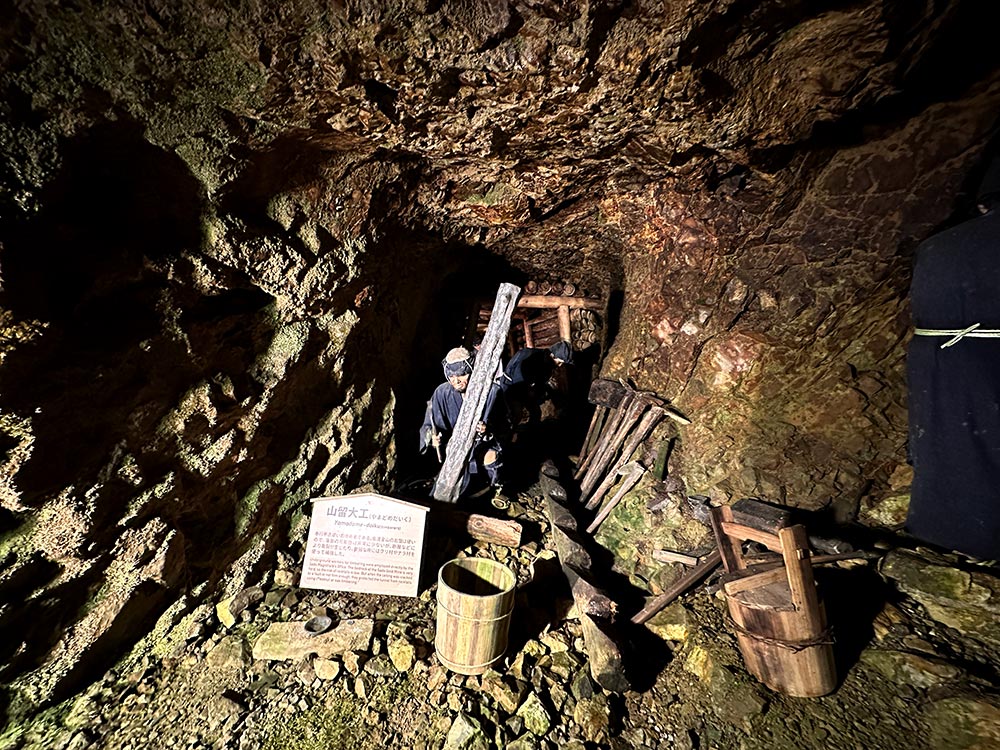

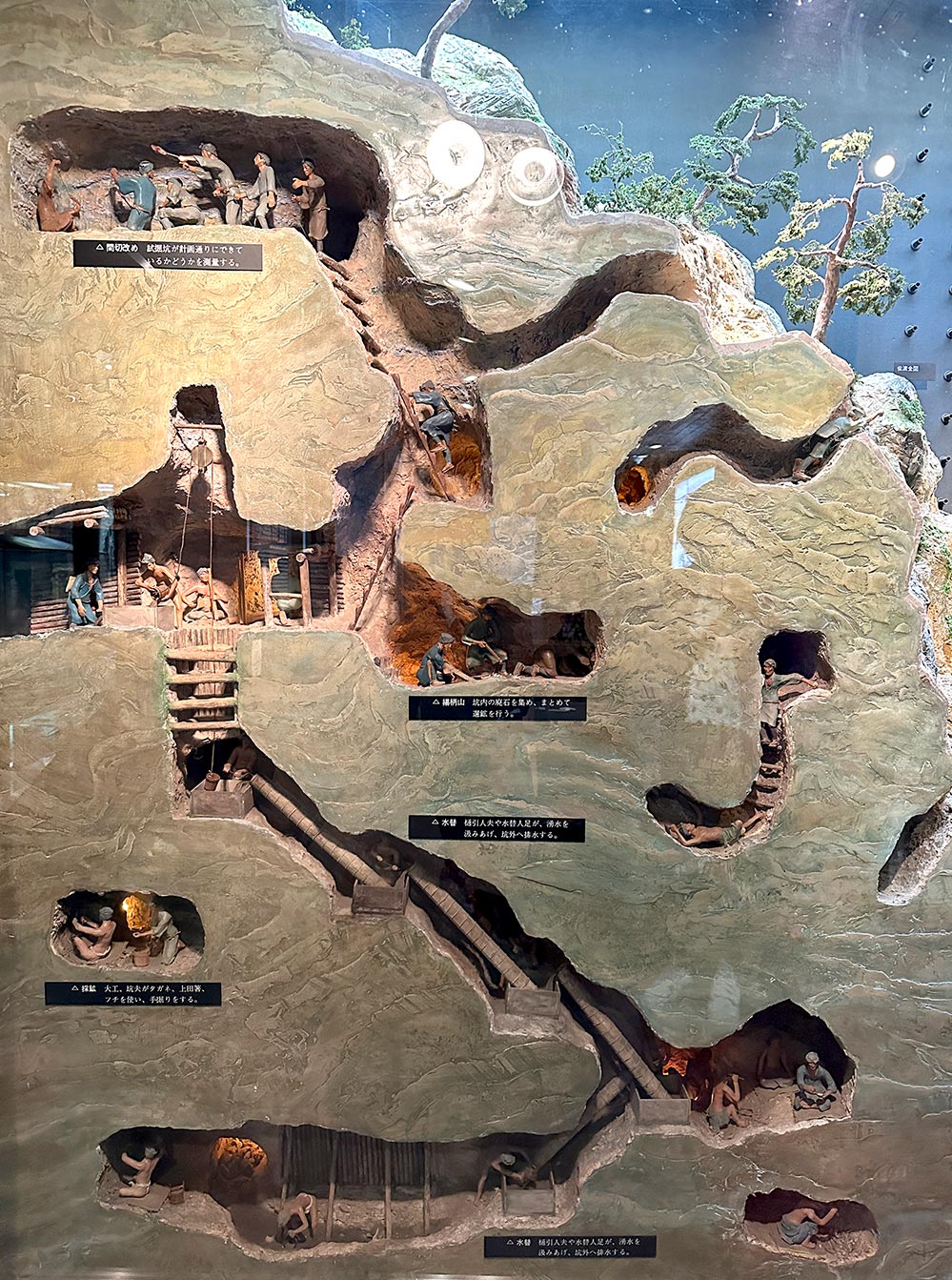

After Sodayu Mine, we headed on to Doyu Mine, the more modern one built post-Edo in the Meiji era and only closed as recently as 1989. The mine seems a little less ‘exciting’ at first glance – technology meant larger and better tunnels and facilities, but the real highlight here is the outdoor half of this section.


Doyu no Warato is a rather unusual feature at the top of the hill where it looks like someone tried to cleave the peak open. This isn’t a natural feature, but a hole created by dynamite to access a major vein of gold located around there. Today it connects Sodayu and Doyu mining tunnels, and you can actually take a walk to the site of the hole on the mountain side – it was raining when we visited so we opted not to walk.

My tip is to bring a jacket as it is several degrees colder in the mines compared to the temperature outside. The mines can be a bit claustrophobic as the tunnels in the old side especially are quite narrow. Expect to do a fair amount of walking and there are stairs as well. Each mine takes about 30-40 minutes to complete in total.
Adventurous visitors can consider booking the private Yamashi Tour for a more intense caving experience that requires a torch and a hard hat – prior bookings are required.
Sado Kinzan Gold Mine 史跡佐渡金山 [Google maps]. Open daily 830am – 5pm. The combined ticket for Sodayu and Doyu Mine costs 1,500 JPY. More at Sado Kinzan.
Explore the mining remains at Kitazawa Flotation Plant
Very close to Sado Kinzan is the Kitazawa Flotation Plant, an abandoned group of structures which were used to process the ore extracted from the mines. Over 50,000 tonnes of ore passed through this plant every month, it was one of the busiest in its heyday. But since the mines shut down, these secondary structures have been left as is, and nature has taken over turning and greening these concrete buildings.
While you can’t explore the abandoned structures probably due to safety reasons, one interesting thing you can do is to come back at night. While it’s dark, the structures are lit with rainbow lights that flash and change along with a soundtrack of accompanying atmospheric music – it is both quite enchanting and unearthly.
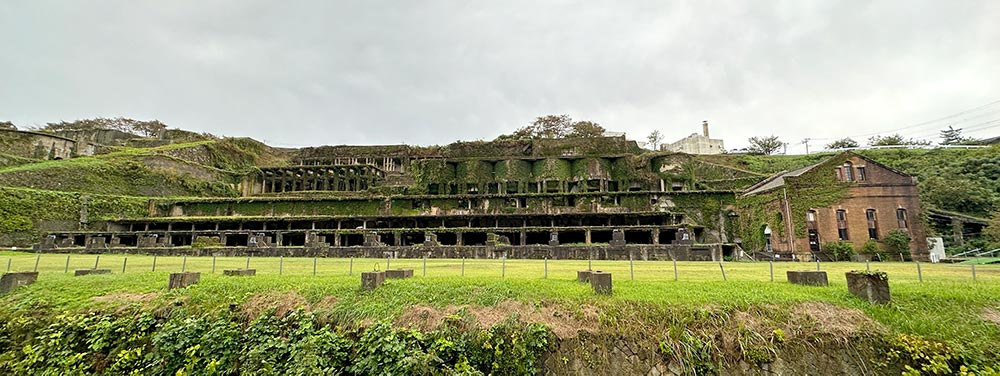




Kitazawa Flotation Plant 北沢浮遊選鉱場跡 (Kitazawa fuyūsenkōba ato) [Google maps]
Admire the view of Senkakuwan
We managed to drive up the western coast of Sado Island but I definitely underestimated how much time we would need to properly explore Sado, so the furthest north I got was Senkakuwan 尖閣湾 or Senkaku Bay. This bay actually consists of 5 smaller bays and are said to resemble the Scandinavian fjords.
We reached pretty late in the evening just a short while before closing and also the weather was pretty iffy so we mostly just strolled around the area and enjoyed the cliff views.
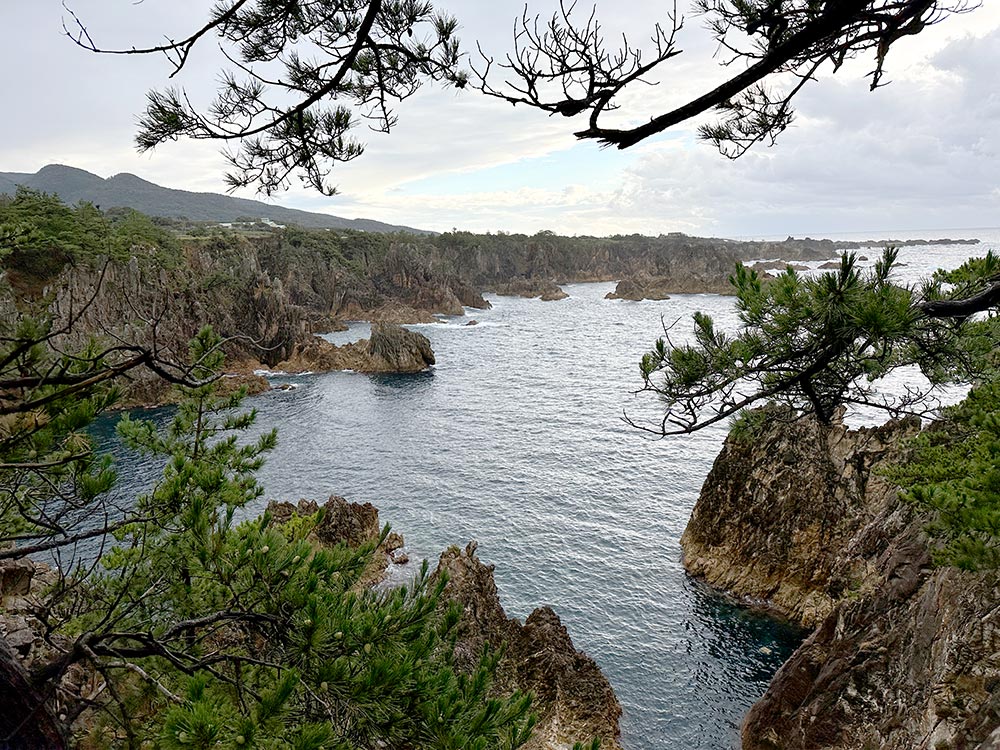

There is a bridge called Yusenkyo Bridge that connects to the very tiny Ageshima Island across the water – fans of the show What is Your Name or Kimi no Na Wa (not the anime, this is the name of a 1950s movie) might recognise this bridge that appeared in the movie as it is also called Machiko’s Bridge after the female lead.

There is a glass bottom boat ride that you can take if you come when the weather is nice – late May to early June is especially popular because day lilies are in bloom then. Spotted a very small lighthouse as well, but other than that this place is mostly a place for nice views and photos.
Senkakuwan 尖閣湾 [Google maps]. Open daily 830am – 5pm. Admission ticket is 500 JPY. More at Senkakuwan Ageshima.
Rare birdwatching at Toki Forest Park
Another rare sight that you can only see on Sado Island are the presence of large groups of wild toki birds. Toki, or the Japanese Crested Ibis, is a mostly white bird that’s faintly pinkish in the right light with a punky mohawk hairdo and distinct red faces that look like a painted on mask.
You know these birds are truly a Japanese national symbol when their scientific name is Nipponia Nippon! They used to be found widespread across Japan but became extinct in the wild in the 1960s due to overpopulation and hunting. The captive Japanese-born tokis died out in the early 2000s, but since then they managed to find a handful of these birds surviving in China and have successfully bred them and you can now see some wild tokis around Sado Island today.

The Toki Forest Parkトキの森公園 is quite close to the Ryotsu Ferry Terminal so it was our last stop before heading back to Niigata. Here you can see an exhibition hall with information about the toki birds and their history, as well as enclosures where different types of tokis are kept in a breeding programme. There are some really pink tokis here alongside the mostly white ones.



I particularly liked the observation area at the Toki Fureai Plaza, with glass windows that let you spy on the large toki enclosure. There is a pool of water right in front of the glass so you can see toki come right up to the water for a drink. They look kinda goofy but also so cool~
There is a Toki Terrace which is a tower where you can do some wild toki spotting, it’s a 10 min drive southeast from the Toki Forest Park [Google maps]. We spotted some wild toki in the rice fields behind our guesthouse! You can also spot other migratory birds around Sado Island in the right season.


Did I also mention that in typical Japanese fashion, you can find the cutest toki decorations and gifts all around this park. I had to buy myself a pair of toki socks just because~



Toki Forest Parkトキの森公園 (Tokinomori koen) [Google maps]. Open daily 830am – 5pm. Admission ticket costs 400 JPY. More at Niigata City website.
Have you been to Sado Island? Tell me what I missed! In the meantime check out other nearby sights around Niigata.

